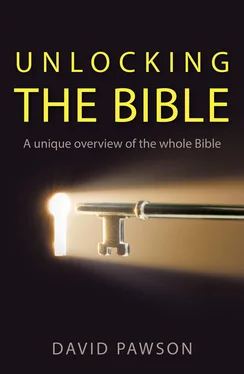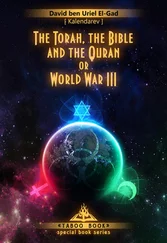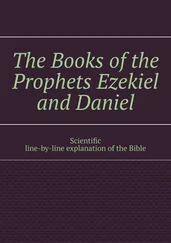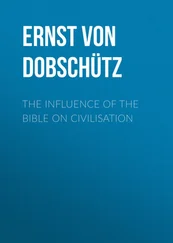Genesis 2 depicts the harmony that should exist in the three levels of relationship between human beings and the created world, God above and our fellow humans. There are, however, some scientific problems to do with the origin of man which must be considered.
Where do prehistoric men fit in?
Evolutionary theory has developed the argument that human beings are descended from the apes. Geological finds suggest that there were prehistoric men who seem to be related to the modern homo sapiens. Various remains have been found, specially by the Leakeys, both father and son, in the Orduvi Gorge in Kenya among other places. It is claimed that human life began in Africa, rather than in the Middle East where the Bible puts it.
What are we to make of this evidence? How are we to understand the relationship of modern man to prehistoric man? Is it possible to reconcile what Scripture and science say about the origin of man?
THE ORIGIN OF MAN
Let us look first at what the Bible says. Genesis tells us that man is made of the same material as the animals. The animals were made of the dust of the earth. We too are made of exactly the same minerals that are found in the crust of the earth. A recent estimate indicates that the minerals in a body are worth about 85p! In contrast to the animal world, however, Genesis 2 also tells us that God breathed into the dust and man became a ‘living soul’.
Soul
‘Soul’ is a misunderstood word. The exact phrase is also used of the animals in Genesis 1. They are called ‘living souls’ because in Hebrew the word ‘soul’ simply means a breathing body. Since animals and men are both described as ‘living souls’ they are both the same kind of beings. When we are in danger at sea we send out an SOS not an SOB – but what we want is for our breathing bodies to be saved.
Lord Soper was at Speaker’s Corner in Hyde Park one day when he was asked, ‘Where is the soul in the body?’ He replied, ‘Where the music is in the organ!’ You can take an organ or a piano to pieces and you will not find the music. It is only there when it is made into a living thing by somebody else.
A special creation
The word ‘soul’ in Genesis 2 has misled many people into thinking that what makes human beings unique is that we have souls. In fact, we are unique for a different reason. To believe that man and the anthropoid apes came from common stock seems to be in direct opposition to the biblical account. Man is without doubt a special creation. He is made in the image of God, direct from dust and not indirectly from another animal. The Hebrew word bara, to create something completely new, is used only three times – of matter, life and man. This implies that there is something unique about man.
The Genesis account emphasizes the unity of the human race too. The apostle Paul told the Athenians that God made us of ‘one blood’. Everything in history points to the unity of our human race in the present. I have studied agricultural archaeology a little and it is interesting to note that agricultural archaeology puts the origins of growing corn and domesticating animals exactly where the Bible puts the Garden of Eden, in north-east Turkey or southern Armenia.
SCIENTIFIC SPECULATION
What does science have to say on the matter? Many people would have us choose to accept one side and reject the other: either science has made false investigations into prehistoric man, or Scripture has given us false information.
There is no doubt that science has discovered remains that do look astonishingly like us. They have been given various names: Neanderthal Man, Peking Man, Java Man, Australian Man. The Leakeys claim to have found human remains which date back 4 million years. Among anthropologists it is almost wholly accepted that human origins are to be found in Africa, rather than in the Middle East.
Homo sapiens is said to go back 30,000 years; Neanderthal Man 40–150,000 years; Swanscombe Man 200,000 years; Homo erectus (China and Java Man) 300,000 years; Australian Man 500,000 years; and now African Man 4 million years. What are we to say about all this?
The first point which should be made very strongly is that nothing has yet been found that is half-ape and half-man. There are prehistoric human remains, but there is nothing half-and-half as yet.
The second point to note is that not all these groups are our direct ancestors. This is now acknowledged by scientists – anthropology is in a state of flux today.
The third point of importance is that the remains do not follow a progressive order. Charts have been produced supposedly showing the development of mankind, starting with the ape on the left-hand side of the chart and moving through successive species to the modern human being, homo sapiens, on the right. But these charts are inaccurate: some of the earliest human remains have larger brains than we do today and walked more upright than some of the later remains. The consensus of opinion now is that none of these groups is connected to ours.
There are three possible ways of resolving the conflict. Here they are in very brief outline.
1 Prehistoric man was biblical man. What we are digging up was the same as Adam, made in the image of God. It has even been suggested that Genesis 1 portrays ‘palaeolithic hunting man’, and Genesis 2 portrays ‘neolithic farming man’.
2 Prehistoric man at some point changed into biblical man. At some point in history this animal-like man or man-like animal became the image of God. Whether just one changed, or a few, or all of them changed at once is open to discussion.
3 Prehistoric man was not biblical man. Prehistoric man had a similar physical appearance and used tools, but there is no apparent trace of religion or prayer. He was a different creature, not made in the image of God.
It is unlikely that we need to plump for one explanation over another at this stage. Anthropology is itself in a state of change and development at present, and it is quite likely that the debate will raise other approaches in the future. It is sufficient for us to note the arguments and be aware that any conclusions we draw may well be provisional.
Evolution
Let us turn next to the question of evolution in general. Most people assume that evolution is Charles Darwin’s theory. It is not. It was first conceived by Aristotle (384–322 BC). In modern days it was Erasmus Darwin, Charles’ grandfather, who first propounded it. Charles picked it up from his atheist grandfather and made it popular.
If we are to grasp the basics of the theory, there are certain terms we need to know.
Variation is the belief that there have been small, gradual changes in form which are passed on to each successive generation. Each generation changes slightly and passes on that change.
From those variations there has been a natural selection. This simply means the survival of those most suited to their environment. Take the case of the speckled moth, for example. Against the coal heaps in north-east England the black moth was more suited in camouflage than the white. The birds were able to consume the white moths more easily and the black moths survived. Now that the slag heaps have gone in the area, the white moths are coming back again and the black moths are disappearing. Natural selection is the process whereby those species most adapted to their environment survive. This selection is ‘natural’ because it happens automatically within nature, with no help from outside.
The belief that there is only a slow, gradual process of variation and selection has now changed, however. A Frenchman called Lamarque said that instead of gradual changes there were sudden, large changes, known as mutations. In this situation, progression looks more like a staircase than an escalator.
Читать дальше











